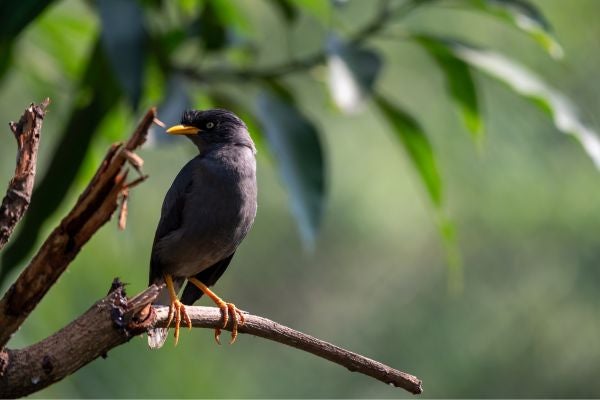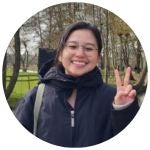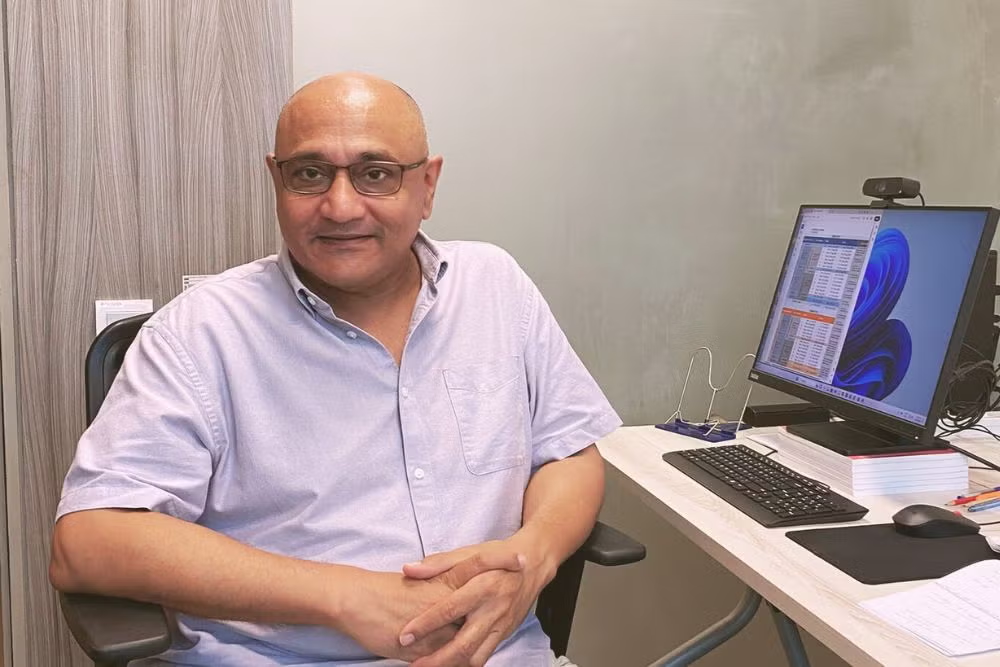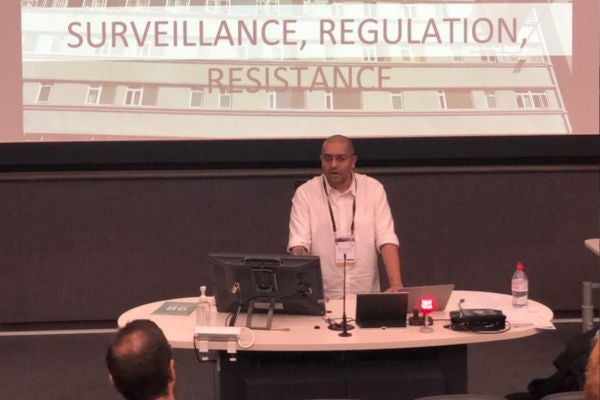From Story to History: New Ways of Knowing Singapore’s Naturalised Species
Picture the towering rain trees casting their shade over the expressway. The butterfly pea vine winding its way up a fence, and the blue colours it lends to kueh. The Javan mynas flying to roost at dusk in a cacophony of birdcalls. These species evoke iconic sights and sounds of Singapore, and they share something surprising in common: each is an introduced species that is not native to Singapore.
Given Singapore’s long history as a hub for global trade, and the vast numbers of plants and animals that have passed through Singapore’s ports, the country’s natural landscapes today are complex assemblages of species from shores near and far. Some of these introductions have been intentional—for plantation agriculture, biological control (i.e. introducing predator species to control pests), animal protein, or ornamental plants—while others are accidental, with new species arriving as stow-aways on ships or establishing themselves in Singapore as “escapees” from the exotic pet trade.

These introductions have had wide-ranging impacts, like the public health crises caused by disease vectors such as the Dengue mosquito (Aedes aegypti). Certain introduced species are known to cause damage to local forest ecosystems, like the fast-growing Zanzibar yam (Dioscorea sansibarensis). Yet other species have attained great cultural significance as part of Singapore's diverse culinary and religious practices, like the coconut (Cocos nucifera). And these introductions are ongoing: multiple new species were recorded as naturalised in Singapore for the first time in 2022. These introductions are the subject of ongoing research in invasion biology to better understand their ecological impacts. Understanding the social impacts of species introductions requires an approach that also integrates history, public health, geography, and anthropology. With the worldwide acceleration of environmental degradation, it has never been more timely to examine the changing composition of Singapore’s biodiversity and its effects on human and non-human communities.
This was the goal of the SSRTG-funded project “Linking the Digital Humanities to Biodiversity History in Singapore and Southeast Asia”, led by Assistant Professor Anthony Medrano (Yale-NUS College, NUS History) and Senior Research Fellow Stefan Huebner (Asia Research Institute). The team, under Project Manager Elysia Toh, sought to present the first full accounting of all the non-native plant and animal species that have become established or naturalised in Singapore—and to demonstrate how this data can be used by researchers interested in the environment across the sciences, social sciences, and humanities.
The project’s datasets detail the taxonomic information, probable introduction pathway, and publication history for introduced species in Singapore and selected locations within Southeast Asia. Reviewed by taxonomic experts from the Singapore Botanic Gardens and the Lee Kong Chian Natural History Museum (LKCNHM), the Checklist of Casual and Naturalised Plant Species in Singapore, Checklist of Established Animal Species in Singapore, and Checklist of Introduced Animal Species in Southeast Asia present the most comprehensive accounting to date of the identity and historical records of introduced species in Singapore, as well as a sampling of data from the broader region. Freely available on ScholarBank@NUS via the links above, these resources are now accessible to researchers from around the world.
To complement the datasets, the project has compiled an online repository that contains digitised versions of the original reference in which the introduction of each species was first recorded. Beyond the information captured in the datasets, these primary sources often include additional details about the species’ habitat, discovery, introduction pathways, ethnographic uses, and more. Selected records are searchable on the NUS Libraries’ Digital Gems Portal by taxonomic name, common name, and even introduction pathway. Where available, photographs and/or illustrations of the species are also included, courtesy of Biodiversity of Singapore and the Singapore Botanic Gardens. The repository provides access to primary source material for not just biologists and environmental historians, but anyone interested in natural history.

The accumulation and presentation of this data lay important groundwork for further research. To demonstrate its potential for digital humanities scholarship, we worked with eight Yale-NUS and NUS students and recent graduates to write and code visual essays for our Biodiversity Stories platform. From a digital ethnography of ornamental fish enthusiasts to the history of Clementi forest as a rubber plantation, these essays (featuring archival images, artefacts, and other multimedia elements from Singapore collections) draw attention to the many embedded roles of introduced species in our cultural landscape.
Another key output of our project draws on the geospatial aspect of the introduced species dataset, mapping the records of species introductions to Singapore over space and time. The visualisation of introduced animal data is available on the project’s Geovisualisation Platform, which includes the ability to filter the data and to overlay historical maps. This visualisation adds yet another dimension to the dataset as a research tool: for instance, it allows researchers to develop questions related to different introduction pathways and habitat ranges based on geographic data.

On the whole, this project presents a model of how a team of researchers from different disciplines can work together to tackle common research interests in the history and future of the environment—and produce valuable tools for other scholars to build upon. This thread of interdisciplinary collaboration was fostered across the project’s three conferences, co-hosted by Asia Research Institute (with the core themes of Digital Humanities, Environmental Humanities, and Biodiversity History and Change), which brought together exciting contributions from artists, poets, traditional medical practitioners, historians, anthropologists, curators, scientists, and more. In addition to its focus on Singapore, this project presents a preliminary expansion to other parts of Southeast Asia, especially given the inter-connectivity of the region and the fluidity of species movements and biological transfers. The presence and establishment of introduced species across Southeast Asia often reflects trade routes, migration flows, and cross-cultural exchanges. These travels and dynamics should be considered and understood for successful mitigation of species introductions and their biological impacts.

As the grant draws to an end, it is our hope that the resources we have published and the community we have built continue to spark collaboration and inspiration for future research. One research direction that is already underway centres around jamu, or traditional Javanese herbal medicine. Jamu has long linked Java, Singapore, Malaysia, and South Asia through a trade in medicinal plants. Exploring the routes, stories, and botany of jamu has been the focus of Research Assistant Yusri bin Rosli and PI Medrano. In particular, they have looked at Singapore’s history and heritage of jamu through one of the country’s oldest jamu shops, which is operated by Puan Siti Nurhuda and is located in Geylang Serai. Examining further the cultural, social, economic, and botanical roots of jamu in Singapore and how these multiple roots are entangled with other parts of South and Southeast Asia is a direction in which this research could grow. Likewise, PI Medrano and colleagues from NUS, Yale-NUS, University of the Philippines-Diliman, ARI, and the ASEAN Centre for Biodiversity are collaborating on a new initiative that centres on the study of Southeast Asia’s nature parks from an interdisciplinary perspective. This collective hopes to provide new ways of knowing and teaching about the region’s protected areas and biodiversity hotspots through braided stories of ecology, culture, community, and history.
All of the project’s elements are available on our project’s home page, generously hosted by the NUS Libraries on their Digital Gems portal.
Contributors' Overview
“Linking the Digital Humanities to Biodiversity History in Singapore and Southeast Asia” was funded by a Social Science Research Thematic Grant (SSRTG) (Type A grant) awarded by the Ministry of Education, Singapore; the grant is co-hosted by Yale-NUS and the Asia Research Institute (ARI). Our project builds on an HSS Seed Fund (Collaborative Research), which was awarded by NUS to PI Medrano and Co-PI Huebner in late January 2020. Additional co-PIs include Associate Professor Darren Yeo Chong Jinn (NUS Department of Biological Sciences, and Lee Kong Chian Nature History Museum), co-PI Associate Professor Natalie Pang Lee San (NUS Libraries) and co-PI Lily Chen (Singapore Botanic Gardens). The project’s core team of research assistants under manager Elysia Toh includes Sheryl Teo, Yusri bin Rosli, Tricia Cho, Dr. Yeo Huiqing, Rachel Lam, and Katherine Enright. Key collaborators to the project include Professor Paul Smith (Oxford University Museum of Natural History), the National Library Board of Singapore, Ronald Milne (Yale-NUS), Associate Professor Feng Chen-Chieh (NUS Geography), and Professor Cynthia Zayas (University of the Philippines, Diliman). For a complete list of our collaborators and acknowledgments, please see here.
The views expressed in this forum are those of the individual authors and do not represent the views of the Asia Research Institute, National University of Singapore, or the institutions to which the authors are attached.














